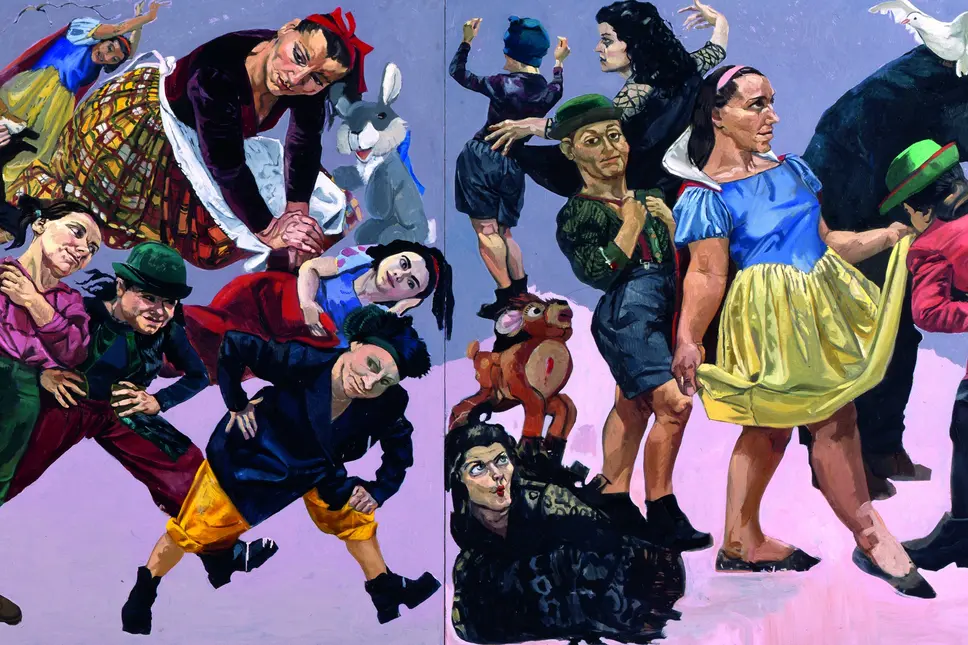“I get inspiration from things that have nothing to do with painting: caricature, items from newspapers, sights in the street, proverbs, nursery-rhymes, children’s games and songs, nightmares, desires, terrors. That question [why do you paint?] has been put to me before and my answer was, ‘To give terror a face.’ But it’s more than that. I paint because I can’t help it.”
— Paula Rego
60 years of artistic production by the Portuguese born artist Paula Rego come together at Tate Britain this summer for her biggest retrospective up to date. The spirit the show portrays is the same spirit carried by the artist throughout her life: a burst of personal experiences, the denouncement of abuse of power, and the urge to make women’s stories visible.
The show opens with a rarely seen work painted by Rego at age 15, Interrogation. This work and others of her early paintings, are inspired by her personal experiences living in Portugal during the dictatorship Estado Novo, the authoritarian regime that suppressed political freedom and limited the rights of women from 1926 until the mid-1970s. As an escape to this regime, Rego was sent by her parents to England at 16 where she studied painting at the Slade School of Fine Art London. But she was unable to let herself become separated from the repression in Portugal and was never able to forget her imperative to denounce injustice.
During the 1960s and 1970s, Rego’s work predominantly consisted of collage-based artworks: cutting out her own drawings and gluing them on paper and adding layers of paint and other drawings. Likewise, her paintings during these decades were abstract, grotesque, abject figures that would someday transform into solid, heavy bodies—waiting to live and take their place in space and breathe.
As good as a plastic artist, Paula Rego is an exceptional story teller. She created a whole universe of characters and places that if at first were brought to her by songs, movies and nursery-rhymes, she was able to masterfully transform into her own main characters—particularly women…
In one of the major highlights of the exhibition, the large oil diptych Cast of Characters from Snow White (1986), we see Rego’s uneasy reinvention of the Disney classic ‘Snow White and the Seven Dwarfs’. A woman in a fantasy story, living with seven dwarfs, poisoned by a witch with an apple and woken up from an eternal sleep by the kiss of prince charming: a delusion fit for reality. The women in the painting do not look as innocent as in the movie and will not look like that in Rego’s following women series such as in Women and Dog series from 1986. The loss of innocence feels conspired, rebellious and at times wanton.
The way Rego approaches the exploration of women has nothing to do with a performance or a stereotypical form for the male gaze. This is women for themselves. The exploration of their sexual desires, the range of temperaments, the secrets behind them, some more sinister, and murderous, than others.
The show allows us to see a full Paula Rego. Going on a journey of her different techniques and materials. From her earlier artworks, until her more recent productions. Never missing her main purpose: denounce, critique, explore—and keep a voice against injustice; a voice most clearly spoken by her women.
Paula Rego at Tate Britain 7 July – October 24, 2021.
Mariana Holguin is CulturAll’s Arts Editor

